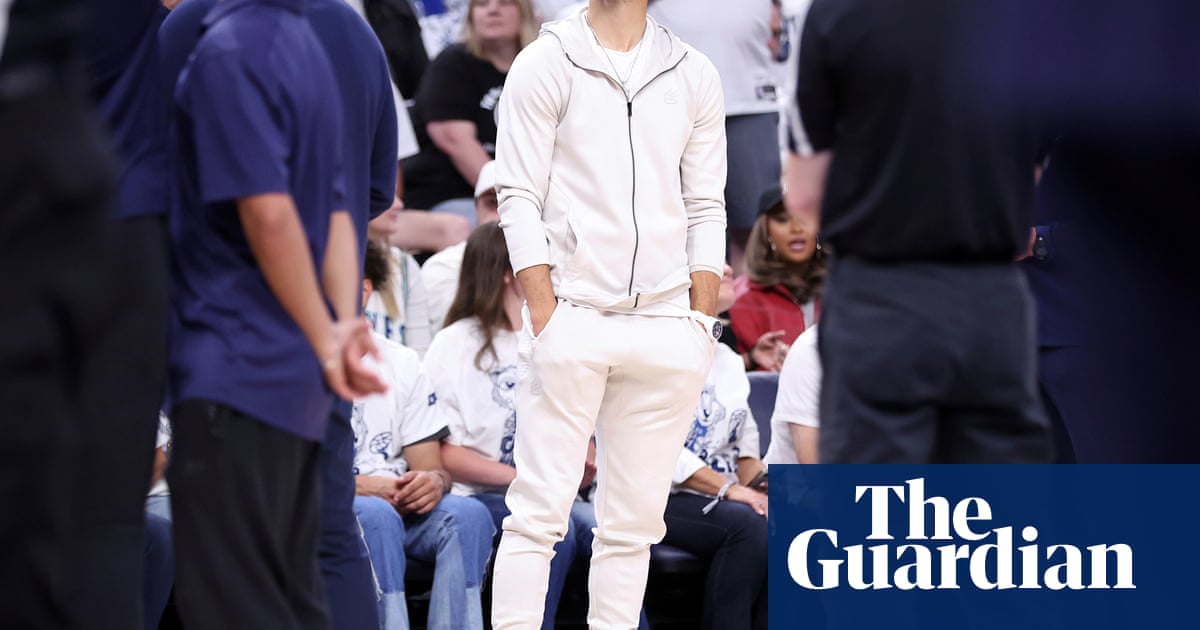TheGolden State Warriorsgot a taste of life after Stephen Curry, and it was repulsive.
The Warriors’ season ended Wednesday night in Game 5 of the Western Conference semi-finals. The younger, more explosive Minnesota Timberwolvesthrashed them121-110 to cap a series the Warriors were never reallyin, even when they briefly led it. That is because this series had a singular line of demarcation: the second quarter of Game 1.
Golden State outscored Minnesota 30-20 in the first 14 minutes and 41 seconds of the series. But at exactly that point, Curry grabbed at what turned out to be a strained left hamstring. He did not play another minute, and while the Warriors hung on to win that night by 11, they had nothing left for the rest of the series. With Curry healthy, Golden State won the first 15 minutes of the series by 10 points. Without him, they lost the last 225 minutes by a combined 56.
Curry still chugs along nicely, even at at 37. The Warriors have slowly reinvented themselves around him, hanging on only to Curry, the 35-year-old Draymond Green, and coach Steve Kerr from the days when they were a true title dynasty in the 2010s. When Curry was on the floor this season, the Warriors still had one of the fiercest offenses in basketball, scoring 120.4 points per 100 possessions. Without him? 108.4, making for roughly the difference between the best offense in theNBAover a full season and the worst.
There was reason to hope, however, that the Warriors would be a little less Steph-dependent during this playoff run. The team swung a midseason trade for Jimmy Butler, who has long been a good scorer and one of the great defenders in basketball. Butler had a transformative impact down the stretch, boosting the Warriors’ numbers when he was on the court more than any other player, Curry included. The Dubs seemed to have a potent mix of talented, seasoned veterans (Curry, Green, Butler) and young supporting castmates (hello, Brandin Podziemski and Moses Moody) to be compelling in the playoffs. A fifth championship for Curry? Probably not, but a substantial run looked possible.
It wasn’t to be. The Warriors without Curry were lifeless, scoring at a clip of 104.6 points per 100 possessions in the series’ final four games. (Minnesota were scoring 116.9.) The Warriors’ assists-to-turnover ratio in those games was 1.2, down from 2.1 during the regular season. The Curry-less Warriors weren’t just missing his all-world shooting ability, but his creativity, too.
The Warriors got some nice performances from their depth players, who tried to patch the gaping hole left by Curry. Forward Jonathan Kuminga was particularly impressive, taking up a more expansive offensive role and scoring 24.3 points per game after Curry’s injury.
But there is only one Curry, and without him, the only Warrior who could plausibly pick up the scoring slack was Butler. It would have been a stretch, though, and Butler floundered on offense as he tried to backfill some of Curry’s points. In Games 2 through 5, Butler shot 45.8% from the field and struggled to find any consistency. The Warriors’ team defense was decent enough, but the offense was so lifeless that the Warriors’ series never got out of neutral once Curry exited.
The Curry-Kerr Warriors have been declared dead several times, only to spring back to life –first to win the title in 2022after missing the playoffs twice in a row, then to work themselves into “intriguing potential contender status”after the Butler trade this season. (They were 25-26 the day they acquired Butler, then finished the season on a 23-8 run and took a seven-game first-round series from the Houston Rockets.) There is no sense in declaring that Curry will never win anything again, only to have to walk it back later.
Sign up toSoccer with Jonathan Wilson
Jonathan Wilson brings expert analysis on the biggest stories from European soccer
after newsletter promotion
The Warriors are playing with fire, though. On the one hand, they have restocked their depth players around Curry nicely. Suffering a steep drop in quality without a player of Curry’s caliber is hardly an indictment of a team-building strategy, either. But on the other hand, even if Curry continues to beat Father Time well into his 40s, the Warriors’ lack of other gamechanging offensive talent was laid bare as he watched from the sidelines. Adding a pricey outside acquisition on top of Butler, who. turns 36 in September, is almost certainly impractical given the Warriors’ heavy salary cap sheet, and even retaining the restricted free agent Kuminga (a bright spot in this series) could push the Warriors quite close to the “first apron” luxury tax threshold that begins to hamper a team’s roster-building options.
No doubt Curry will do all he can to keep lugging the Warriors to within striking distance of contention. The realities of age and the salary cap may well just not apply to a player of his caliber for a while. But the Warriors, for now, are betting not just on Curry’s magic but on a friendlier treatment from the injury gods until the greatest player in their history decides to hang up his sneakers.
It isn’t a great bet, but what else is there to do?
